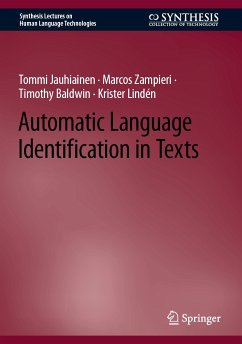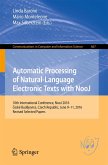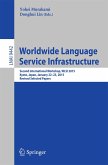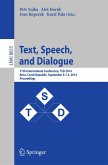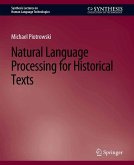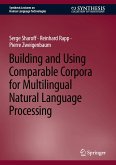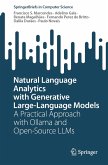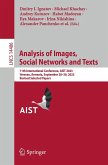This book provides readers with a brief account of the history of Language Identification (LI) research and a survey of the features and methods most used in LI literature. LI is the problem of determining the language in which a document is written and is a crucial part of many text processing pipelines. The authors use a unified notation to clarify the relationships between common LI methods. The book introduces LI performance evaluation methods and takes a detailed look at LI-related shared tasks. The authors identify open issues and discuss the applications of LI and related tasks and proposes future directions for research in LI.
- In addition, this book reviews the history of LI research, including the challenges that have renewed interest in researching the topic
- Compares and contrasts the features and methods commonly used for LI, as well as LI performance evaluation methods
- Highlights the applications of language identificationand identifies areas for future research in LI
About the Authors:
Tommi Jauhiainen, Ph.D., is a Post-doctoral Researcher at The University of Helsinki.
Marcos Zampieri, Ph.D., is an Assistant Professor at George Mason University.
Timothy Baldwin, Ph.D., is the Acting Provost and Chair of the Department of Natural Language Processing at Mohamed bin Zayed University of Artificial Intelligence (MBZUAI) in addition to being a Melbourne Laureate Professor in the School of Computing and Information Systems at The University of Melbourne.
Krister Lindén, Ph.D., is the Research Director of Language Technology at the University of Helsinki in addition to the National Coordinator of FIN-CLARIN, the Finnish Node of CLARIN ERIC, which is a European research infrastructure for Social Sciences and the Humanities.
Dieser Download kann aus rechtlichen Gründen nur mit Rechnungsadresse in A, B, BG, CY, CZ, D, DK, EW, E, FIN, F, GR, HR, H, IRL, I, LT, L, LR, M, NL, PL, P, R, S, SLO, SK ausgeliefert werden.
Es gelten unsere Allgemeinen Geschäftsbedingungen: www.buecher.de/agb
Impressum
www.buecher.de ist ein Internetauftritt der buecher.de internetstores GmbH
Geschäftsführung: Monica Sawhney | Roland Kölbl | Günter Hilger
Sitz der Gesellschaft: Batheyer Straße 115 - 117, 58099 Hagen
Postanschrift: Bürgermeister-Wegele-Str. 12, 86167 Augsburg
Amtsgericht Hagen HRB 13257
Steuernummer: 321/5800/1497
USt-IdNr: DE450055826
Bitte wählen Sie Ihr Anliegen aus.
Rechnungen
Retourenschein anfordern
Bestellstatus
Storno

